38 Classic Austrian Desserts That Charm Every Sweet Tooth
Austrian desserts represent a delightful culinary treasure trove of sweet indulgences that have captivated taste buds for generations.
Delectable creations blend rich cultural heritage with intricate baking techniques passed down through family traditions.
Sophisticated yet comforting, these treats showcase meticulous craftsmanship and remarkable flavor combinations that reflect Austria's complex gastronomic landscape.
Regional variations and time-honored recipes contribute to the unique character of these remarkable confections.
Skillful bakers transform simple ingredients into extraordinary masterpieces that tantalize the palate with nuanced textures and harmonious tastes.
Each dessert tells a story of local customs, seasonal ingredients, and generational cooking wisdom.
The Austrian sweet tradition represents more than just food - it’s a celebration of community, craftsmanship, and culinary artistry.
Your appetite will be thoroughly intrigued by these 38 traditional Austrian desserts that promise an unforgettable gustatory journey:
Austrian Desserts That Steal the Show
Elegant pastries and layered cakes showcase Austria’s love of sweets. Cafés and celebrations wouldn’t feel the same without these timeless treats.
Kaiserschmarrn
Kaiserschmarrn is a legendary Austrian dessert resembling a fluffy, caramelized scrambled pancake beloved by Emperor Franz Joseph I.
Named after the royal ruler, this sweet treat originated in imperial kitchens and quickly became a national favorite.
Habsburg culinary traditions inspired its unique preparation method of creating irregular, torn pancake pieces during cooking.
Traditional servings include generous portions topped with powdered sugar and accompanied by fruit preserves like plum compote or berry sauces.
Modern variations expand the classic recipe with innovative ingredients such as apples, cherries, plums, nuts, and sour cream.
Regional Austrian families pass down generations-old recipes with slight personal twists.
Rustic yet elegant, kaiserschmarrn remains a quintessential Austrian dessert celebrated across the country.
Apfelstrudel
Apfelstrudel is a quintessential Austrian pastry that embodies delicate layers of paper-thin dough wrapped around spiced apple filling, originating from Ottoman culinary influences.
Austrian bakers perfected this dessert after learning pastry techniques from Balkan and Middle Eastern traditions.
Centuries of cultural exchange between Ottomans and Habsburgs helped develop its unique preparation method.
Crisp, buttery pastry envelops a rich mixture of sliced apples, cinnamon, sugar, and sometimes raisins or nuts.
Bakers carefully stretch dough until it becomes almost transparent, creating multiple gossamer-thin layers.
Traditionally served warm with vanilla sauce or dusted powdered sugar, the strudel offers a perfect balance of textures and flavors.
German-speaking regions continue to celebrate this iconic dessert as a beloved culinary treasure.
Krapfen
Krapfen represent European doughnuts originating from Germanic regions with deep roots in medieval culinary traditions.
German bakers pioneered these golden-brown pastries featuring soft, airy interiors deep-fried to crispy perfection.
Recipes documenting krapfen date back to the 14th century, with linguistic references tracing to the 9th century.
Sweet fillings like vanilla or chocolate custards frequently enhance these delightful treats.
Jam-filled variations remain especially popular across Central European regions.
Most krapfen receive elegant finishing touches through powdered sugar dustings or chocolate drizzles.
Regional bakeries continue celebrating these classic pastries as beloved breakfast and dessert options.
Sacher-Torte
Sacher-Torte represents a legendary Austrian chocolate cake crafted with precision and rich flavor complexity.
Invented in 1832 by teenage pastry prodigy Franz Sacher for Prince Clemens Lothar Wensel Metternich, this decadent dessert features layers of chocolate sponge cake coated with smooth apricot jam and glossy chocolate icing.
Signature elements include its dark, intense chocolate layers and perfectly balanced sweetness.
Sophisticated yet simple, the cake demands exceptional baking skills and premium ingredients.
Vienna's Hotel Sacher continues to produce the most authentic version of this classic dessert.
Unsweetened whipped cream traditionally accompanies each slice, enhancing its rich flavor profile.
Every bite connects you to Austrian culinary heritage and gastronomic excellence.
Cremeschnitte
Cremeschnitte are luxurious layered pastries with rich vanilla custard cream sandwiched between crisp puff pastry sheets originating from central European culinary traditions.
Germanic regions popularized this delicate dessert during the Austro-Hungarian empire, potentially inspired by French mille-feuille pastries.
Polish cultures call it Napoleonka, suggesting possible French culinary influences from Napoleon-era baking techniques.
Delicate layers of buttery puff pastry create a crisp exterior that contrasts beautifully with smooth, silky vanilla custard cream.
Pastry chefs carefully construct multiple thin layers to ensure perfect texture and balance between crisp pastry and creamy filling.
Powdered sugar typically dusts the top, providing a sweet finishing touch to this elegant dessert.
Bakeries and home kitchens continue to celebrate this traditional sweet treat, maintaining its popularity across generations.
Vanillekipferl
Vanillekipferl are traditional crescent-shaped cookies originating from Austria, Hungary, and Germany that symbolize historic culinary triumph.
Bakers celebrate a legendary military victory against Turkish forces by crafting these sweet treats in a distinctive crescent shape reminiscent of the Turkish flag.
Typically made with flour, sugar, butter, and vanilla, these cookies often incorporate ground nuts like hazelnuts, almonds, or walnuts.
Christmas season transforms these delicate pastries into a festive favorite, with bakers generously dusting them in powdered sugar or dipping them in rich chocolate.
Austrian and Hungarian bakeries have perfected the recipe over generations, creating a nostalgic treat that connects modern families to their cultural heritage.
The cookies' delicate texture and subtle sweetness make them a beloved winter indulgence.
European households frequently prepare vanillekipferl as part of their holiday baking traditions.
Generations have passed down this simple yet meaningful recipe, ensuring its continued popularity across Central European regions.
Topfenstrudel
Topfenstrudel are legendary Austrian pastry desserts crafted with delicate, almost transparent dough and filled with creamy quark cheese.
These beloved strudels feature a crispy golden exterior that encases a smooth, mildly sweet interior packed with soft cheese.
Bakers carefully fold thin pastry around the quark mixture, creating a light and elegant dessert.
Vanilla and lemon provide subtle aromatic undertones to the filling.
Raisins, apricots, or peaches frequently enhance the cheese mixture's flavor profile.
Austrian bakeries have perfected this traditional treat over generations.
Served warm, topfenstrudel offer a comforting taste of Austria's rich culinary heritage.
Schneenockerln
Ile flottante represents a classic French dessert featuring ethereal meringue clouds floating atop silky vanilla custard, creating a mesmerizing visual and textural experience.
Whipped egg whites, sugar, and vanilla extract form the base of these delicate meringue spheres, which are gently poached until they achieve a light, airy consistency.
International variations emerge across countries like Austria (Schneenockerln), Hungary (Madartej), Croatia, Serbia (snenokle), and Italy (uova di neve), each adding unique regional twists.
Caramel sauce and toasted almonds frequently crown this elegant dessert, enhancing its complex flavor profile.
Sophisticated yet simple, the dish balances rich custard with ethereal meringue, creating a contrasting sensory experience.
French cuisine celebrates this dessert as a quintessential comfort food that marries technical skill with pure indulgence.
Marillenfleck
Marillenfleck is a classic Austrian apricot cake beloved for its simple yet scrumptious blend of fresh fruit and tender cake base.
Vienna's coffeehouses popularized this rustic dessert featuring ripe, juicy apricots nestled in a soft, buttery batter.
German baking traditions inspire its preparation, where quartered apricots create a beautiful geometric pattern across the cake's surface.
Bakers carefully mix butter, sugar, eggs, vanilla, flour, baking powder, salt, and lemon zest to create a smooth, light base.
Each slice showcases a perfect balance between sweet cake and tangy fruit.
Seasonal apricots determine the cake's flavor intensity and texture.
Summer months provide the most flavorful fruit for this traditional treat.
Austrians enjoy Marillenfleck as an afternoon snack with coffee or as a light dessert after meals.
Topfentorte
Topfentorte is a classic Austrian dessert distinguished by its creamy quark cheese filling nestled between delicate sponge cake layers.
Originating in Austria, this distinctive cheesecake features a tangy topfen cheese that gives the cake its signature smooth texture and light flavor.
Bakers carefully combine eggs, sugar, flour, lemon juice, whipping cream, and gelatin to create its signature filling.
Simple ingredients transform into an elegant dessert that balances sweet and tart notes perfectly.
Refrigeration helps set the cake's delicate structure and intensifies its flavors.
Home bakers often dust the finished cake with powdered sugar for a beautiful presentation.
Austrians consider this dessert a beloved staple of their national sweet repertoire.
Semolina Pudding (Griekoch)
Griebrei is a comforting Central European semolina pudding celebrated for its creamy texture and simple ingredients.
Milk, semolina, and sugar form the base of this traditional breakfast dish, creating a smooth, thick consistency when carefully stirred during cooking.
Vanilla and cinnamon often enhance its warm flavor profile, making it a beloved morning meal.
Served in shallow bowls, griebrei becomes even more appealing with fresh fruit toppings like cherries, strawberries, peaches, pears, or apples.
Germans and Austrians particularly enjoy this pudding as a quick and satisfying morning meal.
Its versatility allows for multiple variations and personal touches.
Families have passed down this recipe through generations, maintaining its cultural significance.
Apfelradln
Apfelradln are crispy Austrian apple fritters deep-fried to golden perfection, originating from rural mountain regions where apple trees flourish abundantly.
Rural families traditionally prepare these sweet treats using fresh local apples carefully sliced into circular rings.
Each ring gets dipped into the batter and gently fried until achieving a warm, crunchy exterior with a soft, tender apple center.
Powdered sugar typically dusts the top of these fritters, adding a sweet finishing touch.
Germans and Austrians commonly enjoy Apfelradln during morning breakfasts or afternoon coffee breaks.
Seasonal autumn festivals frequently feature these comforting fritters as a popular dessert.
Farm kitchens across alpine regions continue preserving this generations-old recipe, celebrating simple ingredients and traditional cooking methods.
Millirahmstrudel
Millirahmstrudel embodies Austrian pastry excellence with its delicate phyllo dough wrapped around a luxurious cream and raisin filling.
Originating near Vienna in the 19th century, this classic dessert traces its first documented recipe to 1696.
Bakers carefully craft the strudel by layering thin pastry sheets with a rich mixture of sweet bread crumbs, plump raisins, and creamy filling.
Gentle oven baking transforms the layers into a golden, crisp exterior that contrasts beautifully with its soft interior.
Hot vanilla sauce accompanies the warm strudel, creating a decadent dessert experience.
Austrians celebrate this treat as a quintessential example of their refined baking traditions.
Generations have enjoyed this elegant pastry as a comforting sweet course after meals.
Zwetschgenknodel
Zwetschgenknödel are Bavarian potato dumplings bursting with sweet damson plums, a quintessential German dessert that transforms simple ingredients into a remarkable culinary experience.
Potato dough carefully wraps whole pitted plums stuffed with sugar, creating soft spherical treats that simmer in water until they gently float to the surface.
Bavarian home cooks traditionally roll these dumplings in buttered, browned breadcrumbs and dust them with powdered sugar for added sweetness.
Skilled bakers prepare the dough using boiled mashed potatoes, flour, egg yolks, ground semolina wheat, butter, and salt.
Some versions feature an extra step of frying the boiled dumplings in buttered breadcrumbs for additional texture.
Germans typically serve these dumplings warm as a comforting dessert or sweet side dish.
Linzer Torte
Linzertorte dominates Austrian dessert traditions as the world's oldest city-named cake originating in Linz, Austria.
Bakers craft this exquisite pastry with a crumbly, buttery shell enhanced by lemon juice, cinnamon, and ground nuts like almonds or hazelnuts.
Redcurrant jam traditionally fills the cake's interior, though raspberry or apricot variations exist.
Generations have enjoyed its distinctive lattice-style top crust, which creates a beautiful crosshatch pattern across the surface.
Historical records trace the dessert back to 1696, making it a significant culinary artifact.
Jindrak, a renowned Austrian confectioner, helped popularize the recipe throughout Europe.
Nutty undertones and jammy sweetness define its complex flavor profile.
Generations of bakers have preserved this classic Austrian cake's elegant simplicity and rich gastronomic heritage.
Donauwelle
Donauwelle is a stunning German sheet cake featuring two distinct cake layers that create a mesmerizing wave-like pattern when sliced.
Vanilla and chocolate pound cake batters form the base of this classic dessert, with tart cherries strategically dropped throughout the baking process.
Dark cherries sink into the batter, creating beautiful swirls that resemble the flowing Danube River's waves.
Rich buttercream spreads luxuriously across the cake's surface, adding creamy depth to each bite.
Chocolate ganache drizzles over the top, providing a decadent finishing touch to this elegant treat.
Traditional bakeries across Germany and Austria craft this dessert with precision and care.
Germans often enjoy Donauwelle as an afternoon coffee accompaniment or a special occasion dessert.
Linzer Augen
Linzer Augen are delicate Austrian sandwich cookies featuring two shortbread-style cookies joined with redcurrant jam, traditionally cut with distinctive eye-shaped holes in the top layer.
Originating from the city of Linz, these miniature treats mirror the flavors of the classic Linzer torte with their buttery, crumbly texture and sweet-tart jam filling.
Austrians craft these cookies using ground almonds or hazelnuts in the dough, creating a rich, nutty base that complements the fruity preserve.
Powdered sugar dusts the top cookie, adding a delicate white contrast to the golden-brown pastry.
Bakers carefully cut matching shapes like circles or hearts, ensuring a perfect seal around the jam center.
Holiday tables and bakery displays showcase these elegant cookies as a beloved Austrian dessert.
Winter celebrations frequently feature Linzer Augen as a traditional sweet treat.
Generations have passed down this simple yet sophisticated cookie recipe, maintaining its cultural culinary significance.
Zimtsterne
Zimtsterne are traditional German Christmas star-shaped cookies bursting with warm cinnamon flavor and a distinctive crisp texture.
German bakers create these festive treats using ground almonds, egg whites, sugar, and generous amounts of ground cinnamon.
Nutty almond flour provides the cookie's signature rich base while creating a delicate crumbly consistency.
Egg whites whipped into a glossy meringue help bind the ingredients and create a light, airy structure.
Bakers carefully roll the dough and cut precise star shapes before baking them to golden perfection.
White royal icing made from egg whites and powdered sugar gives these cookies a smooth, elegant finish.
Each zimtsterne carries the warmth of holiday spices and traditional German baking techniques.
Christmas celebrations across Germany and Austria frequently feature these aromatic cinnamon stars as a beloved seasonal dessert.
Salzburger Nockerl
Salzburger nockerl are elegant Austrian mountain-shaped soufflés that shine with dramatic presentation and rich culinary history.
Originating in Salzburg during the 17th century, these vanilla-infused dumplings symbolize the city's three surrounding mountains through their distinctive three-peaked design.
Bakers carefully whip egg whites to create an incredibly light, airy texture that rises dramatically in the oven.
Pure vanilla and subtle sweetness define their delicate flavor profile.
Austrian pastry chefs traditionally serve these soufflés warm with powdered sugar and fruit compote.
Meticulous preparation requires precise egg white beating and gentle folding techniques.
Simple ingredients like eggs, sugar, and vanilla transform into an ethereal dessert.
Regional pride and architectural inspiration converge in this iconic Austrian sweet treat.
Kardinalschnitte
Kardinalschnitte is an elegant Austrian dessert celebrating Vienna's culinary artistry through its intricate layered composition of white meringue and golden genoise sponge cake.
Catholic cardinal vestments inspired its striking color scheme, representing spiritual symbolism through delicate pastry construction.
Skilled bakers carefully craft each layer with precise meringue techniques and soft sponge cake textures.
Coffee-flavored cream fills the interior, providing rich depth to the light dessert structure.
Fresh berries or jam often adorn the top, adding vibrant color and complementary taste.
Cornmeal batter creates unique structural walls between layers, enhancing the cake's architectural design.
Crisp outer meringue edges provide subtle crunch against smooth cream filling.
Generations of Austrian bakers have perfected this complex dessert, transforming simple ingredients into a sophisticated culinary experience.
Strauben
Strauben are crispy Austrian pastries featuring a unique wine-infused dough that transforms simple ingredients into golden-brown fried treats.
Originating in Austria's alpine regions, these delicate swirls require precise culinary techniques to achieve their signature shape and texture.
Bakers carefully mix flour, egg yolks, salt, and white wine to create a smooth, pliable dough that chills before preparation.
Skilled hands roll and cut the dough into thin strips, which are then gently woven into loose, intricate patterns.
Hot oil becomes the medium for frying these pastries until they reach a perfect golden-brown color and crisp exterior.
Traditionally served as a sweet snack or dessert, strauben often come dusted with powdered sugar for added sweetness.
Mountain communities especially cherish this recipe as a festive treat during celebrations and gatherings.
Opfelkuachle
Jabuke u slafroku are crispy, golden-brown Croatian apple fritters enveloped in a light, vanilla-infused batter that transforms simple apples into a mouthwatering dessert.
Each slice gets a quick fry in hot oil until achieving a perfect golden exterior with a soft, warm interior.
Cinnamon or powdered sugar adds an extra layer of sweetness to the fritters.
The playful name translates to "apples in a bathrobe," describing how the batter wraps around the fruit like a cozy garment.
Vanilla sauce makes an optional but delicious accompaniment to this traditional Croatian treat.
While not a complex dish, these fritters showcase the magic of simple ingredients transformed through careful preparation.
Punschkrapfen
Battenberg cake radiates British dessert elegance with its distinctive checkerboard pattern of pink and yellow sponge squares joined by apricot jam and wrapped in marzipan.
Originating from Victorian England, this unique square cake commemorates royal wedding celebrations for Princess Victoria's marriage.
Rum-soaked biscuit sponges create its signature dense texture and rich flavor profile.
Marzipan coating provides a sweet almond exterior that contrasts beautifully with the soft internal cake layers.
Bakers carefully construct the geometric design by precisely cutting and assembling colored cake sections.
Chocolate drizzles or cocktail cherries often complete the decorative presentation.
Generations of home bakers have treasured this iconic British tea-time treat.
Its playful visual design makes Battenberg cake a memorable dessert centerpiece.
Bauernkrapfen
Bauernkrapfen are Austrian ring-shaped pastries deep-fried to golden perfection and beloved throughout Styria and Carinthia.
These crispy treats emerge from yeasted dough carefully shaped into circular forms before being immersed in hot oil.
Regional bakers craft each pastry with distinctive techniques passed through generations.
Carnival celebrations and festive gatherings frequently feature these sweet snacks as central attractions.
Powdered sugar traditionally adorns the crisp exterior, creating a delicate white coating.
Some creative variations include jam-filled centers reminiscent of classic jelly doughnuts.
Texture plays a significant role in their popularity, offering a satisfying crunch with each bite.
Family recipes often determine subtle differences in preparation, ensuring unique flavor profiles across different households.
Moosbeernocken
Moosbeernocken are fluffy Austrian alpine pancakes bursting with wild bilberries harvested exclusively during July's brief mountain ripening season.
Mountain regions of Austria and Germany celebrate these delicate pancakes as a seasonal delicacy made from freshly gathered bilberries.
Skilled home cooks carefully fold ripe bilberries into soft wheat flour batter, creating a rustic breakfast or dessert treat.
Bilberries provide a deep purple-blue color and intense wild berry flavor that distinguishes these pancakes from standard recipes.
European alpine communities consider Moosbeernocken a cherished summer culinary tradition.
Families often serve these pancakes with powdered sugar, sweet cream, or fruit compote.
Panama Torte
Panama torte celebrates Austria's rich chocolate heritage with a decadent almond-infused cake created to mark the Panama Canal's historic 1914 opening.
Dark chocolate and almonds form the cake's luxurious foundation, blending breadcrumbs, eggs, sugar, and extracts into a smooth, sophisticated dessert.
Bakers carefully beat egg yolks with sugar and chocolate, creating a rich base that transforms when fluffy egg whites are gently folded in.
Toasted blanched almonds add a nutty crunch to the batter's silky texture.
Butter-lined pans help create the cake's perfect golden edges and tender crumb.
Vanilla and almond extracts enhance the complex flavor profile with subtle, aromatic notes.
German and Austrian baking traditions shine through in this elegant, layered confection.
Baking and cooling complete the torte's smooth, moist transformation into a memorable chocolate experience.
Prugeltorte
Prügeltorte is a traditional Austrian spit cake meticulously crafted by pouring liquid dough onto a rotating spit over an open fire.
Originating in Austria, this festive dessert appears at special celebrations like weddings, christenings, and Christmas gatherings.
Bakers skillfully rotate the spit to create a golden-brown cylindrical cake with a unique spiral texture.
Eggs, butter, sugar, flour, and a hint of lemon zest form the core ingredients of this distinctive treat.
Generations have perfected the technique of gradually building layers of batter while constantly turning the spit.
Families and bakeries continue the time-honored tradition of preparing this spectacular cake that symbolizes Austrian culinary heritage.
Each slice reveals intricate spiral patterns and a rich, buttery flavor that delights dessert enthusiasts.
Pofesen
Pofesen are Austrian sweet sandwiches transforming simple bread into a golden-crisp breakfast treat originating from traditional Austrian cuisine.
Bakers create these delights by layering powidl (plum jam) between bread slices before dipping them in a rich egg, milk, and sugar mixture.
Frying the sandwich in butter gives it a crispy exterior and soft, warm interior.
Each slice becomes a caramelized, sweet experience with a vibrant plum jam center.
German and Austrian households traditionally serve pofesen as a quick morning meal or afternoon snack.
European bakeries often feature this simple yet satisfying dish on their menus.
Salt and powdered sugar sometimes complement the final presentation, adding extra flavor complexity.
Biedermeier-Torte
Biedermeier-torte embodies elegant Austrian pastry craftsmanship through its intricate layered design featuring alternating dark and light sponge cake.
Originating in Vienna during the mid-19th century Biedermeier period, this sophisticated dessert combines rich chocolate and nougat cream between delicate cake layers.
Hazelnuts and maraschino liqueur provide distinctive flavor complexity to the sophisticated treat.
Bakers carefully construct each layer to create visual and taste symmetry.
Espresso or abrauner coffee serves as the classic accompanying beverage.
Served during special occasions and afternoon gatherings, the torte represents refined Viennese baking traditions.
Guests typically enjoy small slices to savor its nuanced flavors and elegant presentation.
Nuss Schnitten
Burgenlander schnitten are exquisite Austrian dessert slices featuring a distinctive two-layer composition of nutty base and cloud-like meringue topping.
Originating in southern Burgenland, these sweet treats combine ground nuts like walnuts or almonds with a buttery dough foundation crafted from sugar, egg yolks, and flour.
Bakers carefully spread a layer of apricot or raspberry jam across the initial baked base before crowning it with a glossy egg white, sugar, and water meringue frosting.
Each slice receives a golden finish through careful oven baking, creating a crisp exterior and tender interior.
Some variations enhance the dessert with chocolate glaze or sprinkles for extra indulgence.
Austrian bakeries and home kitchens treasure this traditional dessert for its delicate texture and balanced sweetness.
Regional ingredients and precise preparation techniques ensure each slice represents southern Burgenland's rich culinary heritage.
Kiachl
Kiachl are crispy Austrian pastries deep-fried to golden perfection with a distinctive hollow center that transforms simple yeast dough into a festive delicacy.
Mountain regions of Tyrol cherish these traditional treats during Christmas celebrations and local festivals.
Skilled bakers carefully shape soft dough into round, flat discs with a signature central depression before immersing them in hot lard.
Sweet versions get dusted with powdered sugar and paired with cranberry jam, while savory options welcome hearty toppings.
Austrian families gather around these versatile pastries, enjoying them as quick snacks or elegant desserts.
Crisp edges and tender interiors make kiachl a beloved comfort food.
Winter gatherings often feature these warm, satisfying treats as a centerpiece of culinary tradition.
Puppenkrapfen
Puppenkrapfen are delicate Austrian pastry miniatures bursting with sweet tradition and culinary charm.
Small round doughnuts emerge from enriched yeasted dough carefully deep-fried to achieve a golden-brown exterior.
Austrian bakers craft these tiny treats using specific techniques passed through generations.
Apricot jam serves as the most popular filling inside these crisp pastry shells.
Powdered sugar generously coats each small doughnut after frying, creating an irresistible sweet finish.
Miniature size distinguishes these krapfen from standard doughnut versions.
Regional bakeries across Austria prepare these bite-sized delicacies during festive seasons.
Generations of families continue enjoying these classic sweet treats as beloved comfort food.
Sandtorte
Sandtorte represents an elegant Austrian cake distinguished by its light, airy texture and precise preparation method from Vienna's coffeehouse culture.
Vienna's classic dessert combines simple ingredients like flour, sugar, butter, eggs, cornstarch, and salt into a delicate culinary creation.
Bakers carefully beat butter with sugar and egg yolks until creamy and smooth.
Separately, they whisk egg whites with sugar to create stiff, glossy peaks.
Gently folding the egg white mixture into the butter base ensures the cake's signature softness and volume.
Traditionally served alongside coffee, this cake provides a subtle sweetness that complements afternoon gatherings.
German-speaking regions consider sandtorte a standard teatime treat with generations of baking tradition.
Generations of Austrian families have perfected this recipe, passing techniques from one cook to another.
Russische Punschtorte
Russische punschtorte stands as an exquisite Austrian dessert combining rum-soaked sponge cake layers with silky diplomat cream and torched meringue frosting.
Vienna's legendary Demel coffeehouse originated this sophisticated cake that balances rich rum undertones with delicate textures.
Candied violets and crushed pistachios garnish the exterior, adding elegant visual and flavor complexity.
Meringue frosting receives careful blowtorch treatment, creating subtle caramelized highlights across the surface.
Multiple cake layers absorb rum, intensifying the dessert's deep flavor profile.
Each slice reveals intricate construction and carefully balanced ingredients.
Traditional Austrian baking techniques shine through its refined presentation.
Generations of pastry makers have perfected this complex sweet masterpiece.
Topfengolatsche
Topfengolatsche is a traditional Austrian pastry featuring a delicate, flaky dough folded and stuffed with a creamy topfen cheese filling enriched by rum-soaked raisins.
Austrian bakeries carefully craft this sweet treat by blending soft topfen cheese with sugar, eggs, butter, and vanilla for a rich, indulgent flavor profile.
Golatschen, a broader pastry category, inspired this specific variation that highlights the smooth texture of fresh cheese.
Regional bakers across Austria prepare topfengolatsche with meticulous attention to achieving a golden, crisp exterior.
Pastry chefs roll thin layers of dough and carefully fold them to create elegant, triangular shapes.
Sweet raisins soaked in rum add depth and complexity to the creamy cheese mixture.
Butter and vanilla enhance the filling's richness, creating a balanced taste.
Served warm, topfengolatsche offers a comforting blend of textures and flavors that embody Austrian baking traditions.
Rahmkoch
Rahmkoch represents a traditional Austrian alpine dessert blending rich cream with sweet simplicity from Salzburg's Lungau region.
Mountain farmers created this custard-like treat using basic ingredients like cream, sugar, butter, and wheat flour.
Raisins provide subtle sweetness and texture to the creamy mixture.
Eggs enhance the dessert's richness and smooth consistency.
Vanilla or lemon zest sometimes add gentle aromatic notes.
Regional cooks prepare the dessert by slowly cooking ingredients until thickening occurs.
Family gatherings often feature this comforting sweet course.
Generations have enjoyed this simple yet satisfying alpine specialty.
Spanische Windtorte
Spanische windtorte is an elaborate Austrian meringue cake steeped in imperial culinary tradition and recognized as Vienna's most sophisticated dessert.
Baroque-era cookbooks showcase this intricate creation featuring multiple delicate meringue layers carefully constructed through precise technique.
Bakers whisk egg whites and caster sugar into a glossy meringue, which forms the cake's structural base after careful piping and baking.
Skilled pastry makers meticulously layer the crisp white meringue with fresh berries and smooth whipped cream.
Each layer requires exceptional patience and precision to achieve the cake's signature texture and appearance.
Austrian royalty and aristocrats traditionally served this dessert during grand dinner parties as a stunning centerpiece.
Lightweight yet complex, spanische windtorte demands expert skill and represents Austria's rich gastronomic heritage.
Generations of bakers have preserved this challenging recipe as a testament to their culinary craftsmanship.
Mohnpalatschinken
Mohnpalatschinken represent an iconic Austrian dessert featuring delicate pancakes generously stuffed with ground poppy seeds and sweet ingredients.
Austrian kitchens traditionally prepare these thin crepes by spreading a rich poppy seed mixture across warm, freshly cooked pancakes.
Sugar and occasionally milk enhance the filling's smooth texture and rich flavor.
Skilled bakers carefully roll the pancakes into neat cylinders after spreading the poppy seed mixture evenly.
Germans and Central European countries also enjoy similar poppy seed pancake variations.
Poppy seeds provide a distinctive nutty flavor and unique textural element to this classic Austrian dish.
How Do Austrian Dessert Flavors Change with the Seasons?
Austrian desserts beautifully reflect the country’s seasonal bounty, adapting flavors and ingredients to the rhythms of the year. Here’s how seasons shape their taste profiles:
Are Austrian Desserts Always Rich and Creamy, or Is There More Variety?
While many Austrian desserts are known for their rich and creamy textures, the tradition is far more diverse. Here’s what to expect:
In short, Austrian desserts encompass everything from light, fruit-forward dishes to luxurious, creamy confections, catering to a variety of tastes.

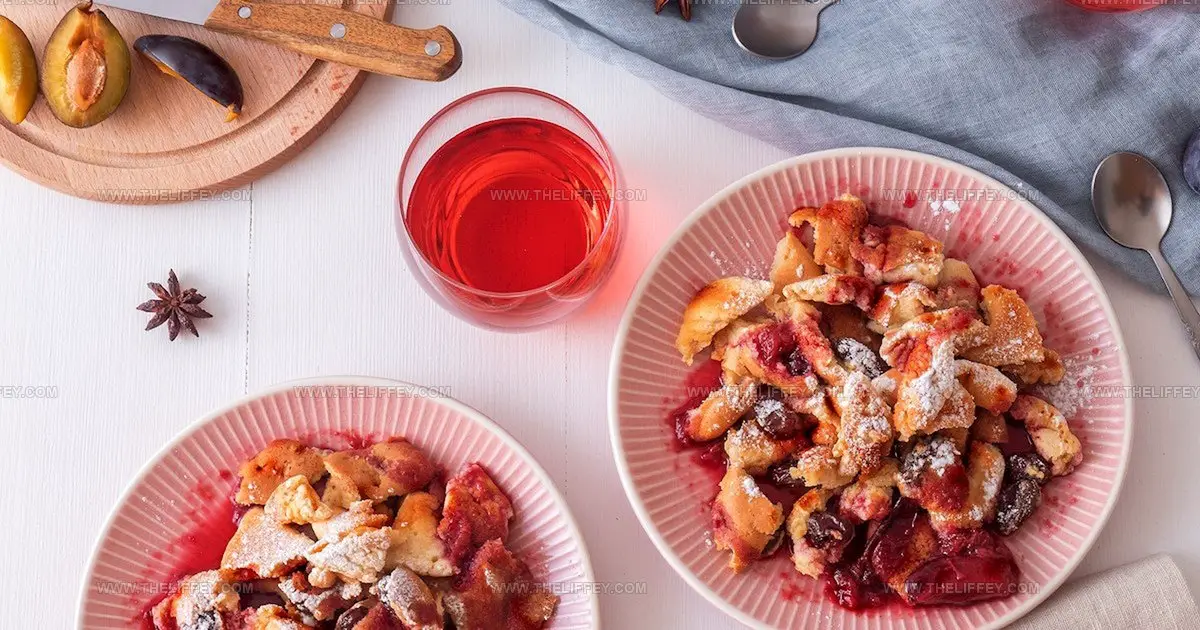
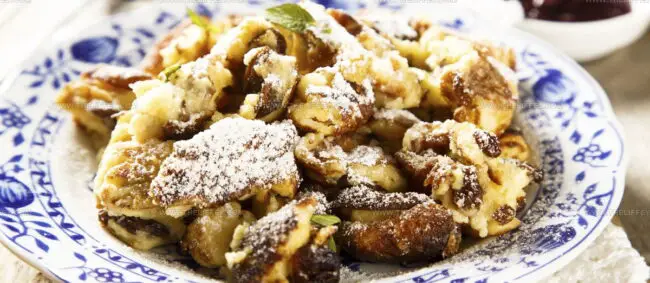
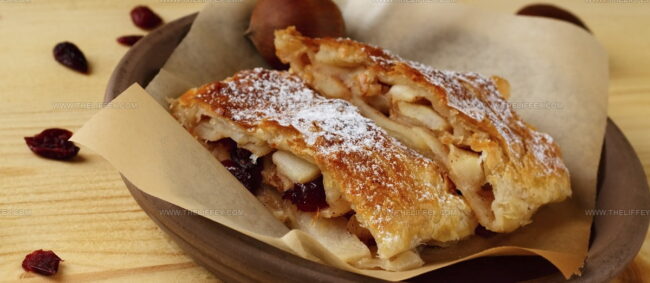
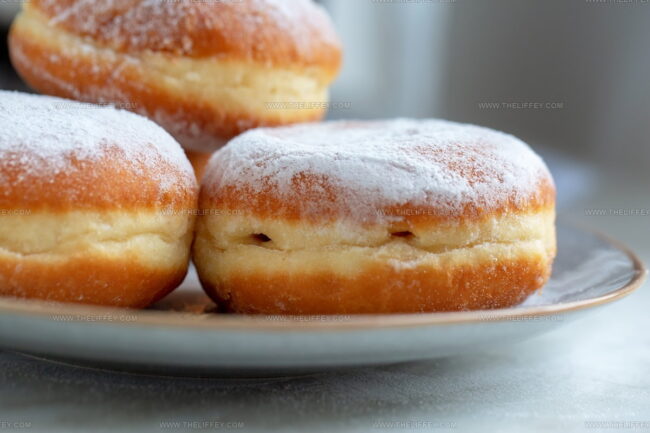
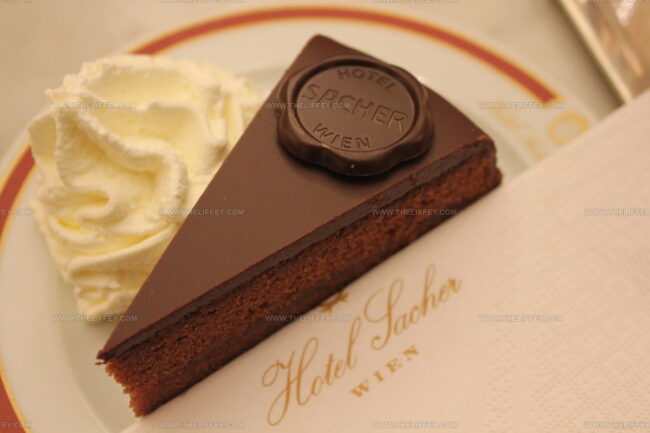
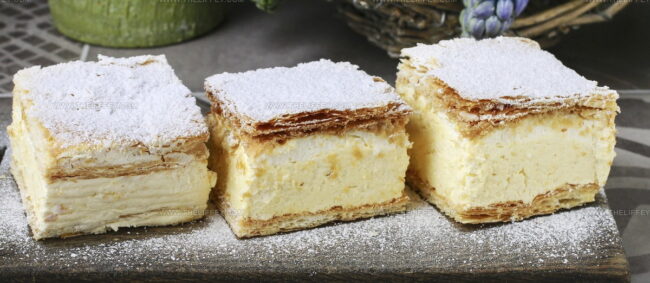
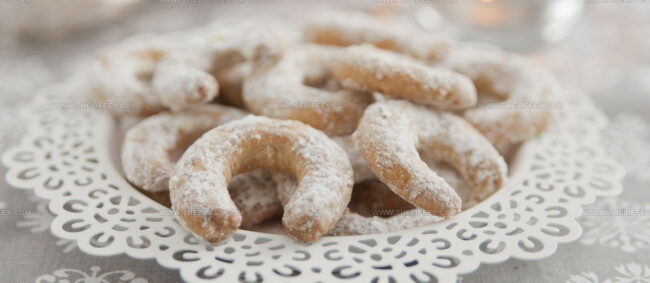
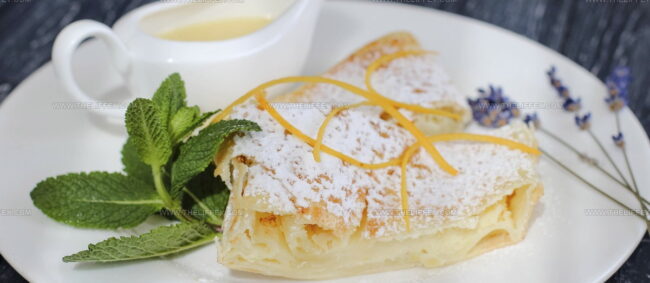
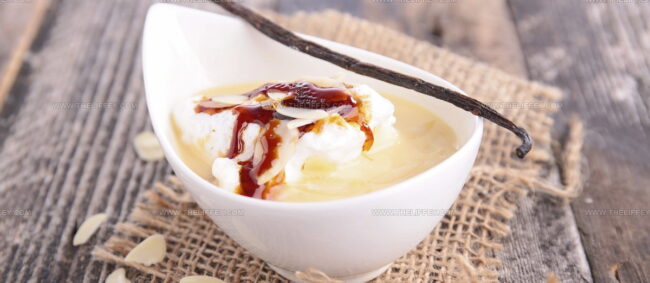
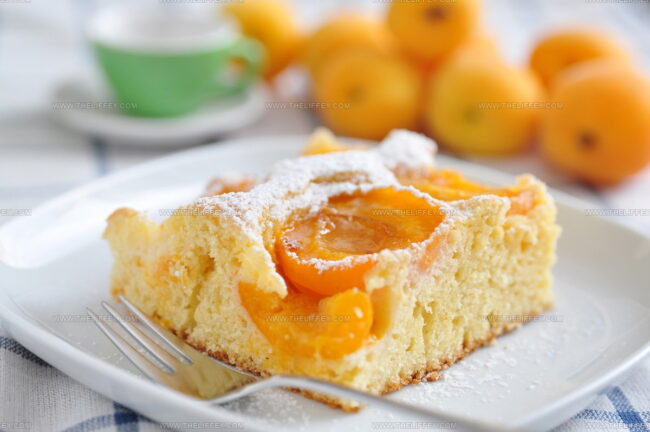
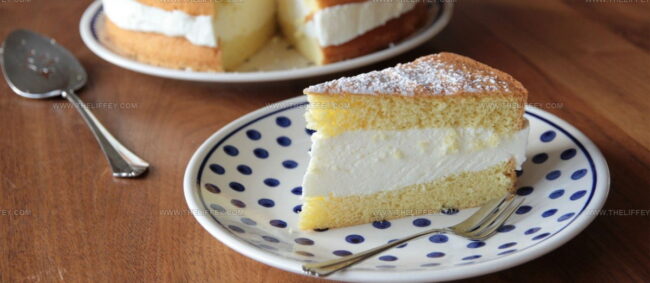
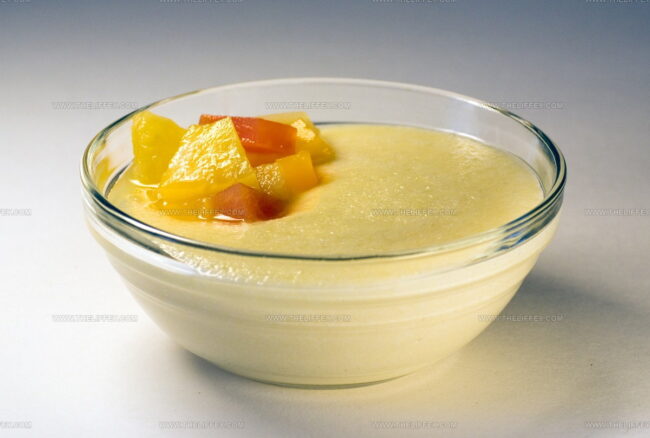
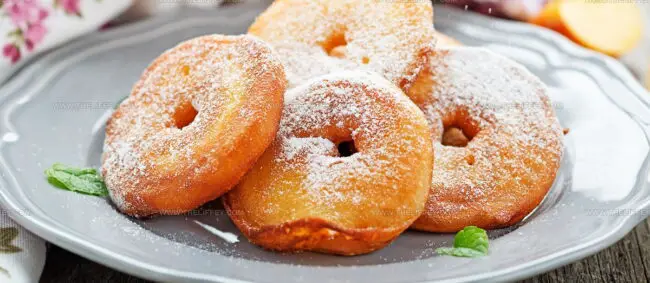
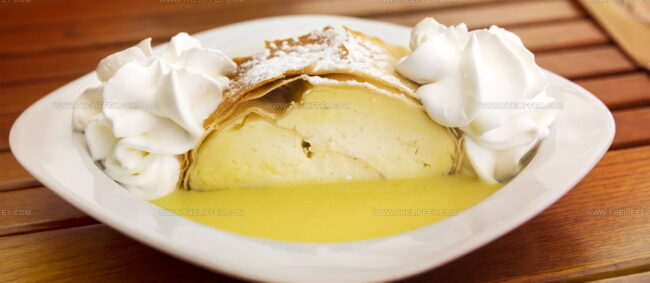
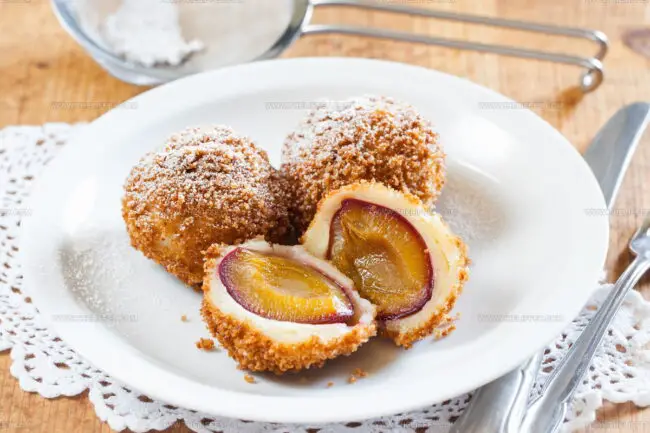
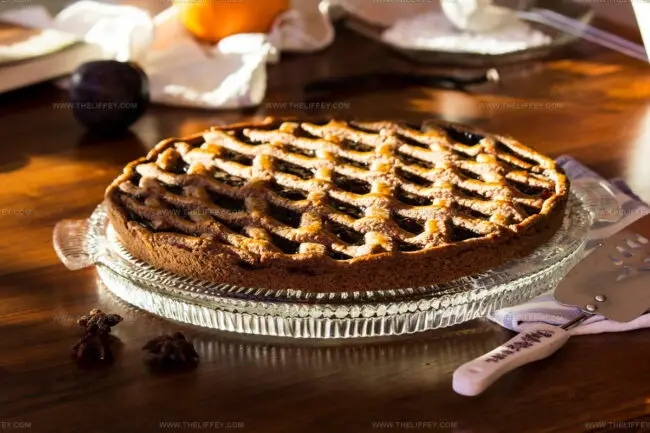
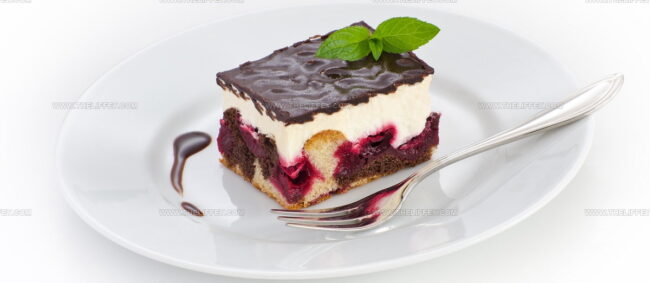
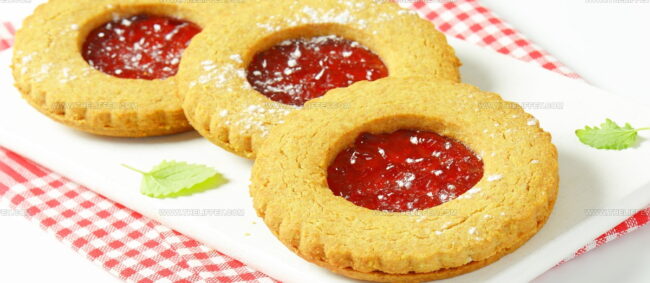
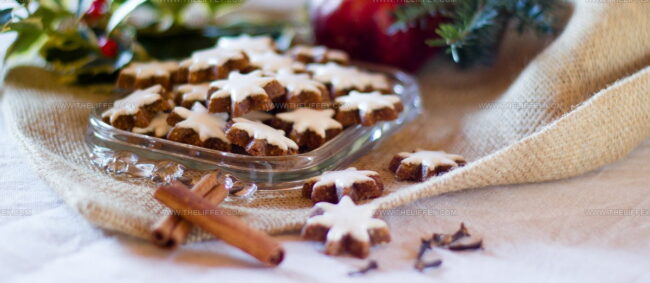
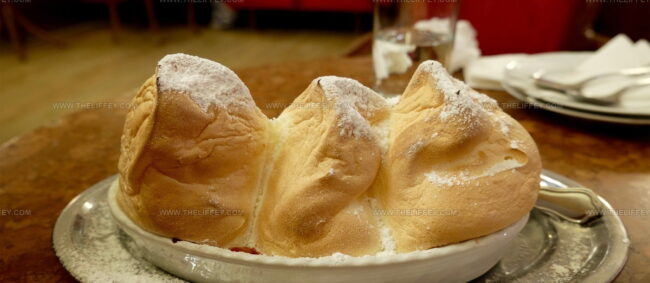
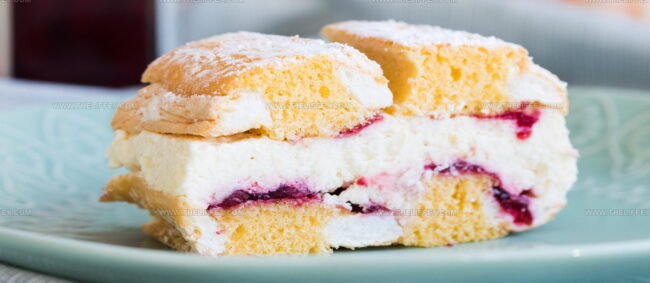
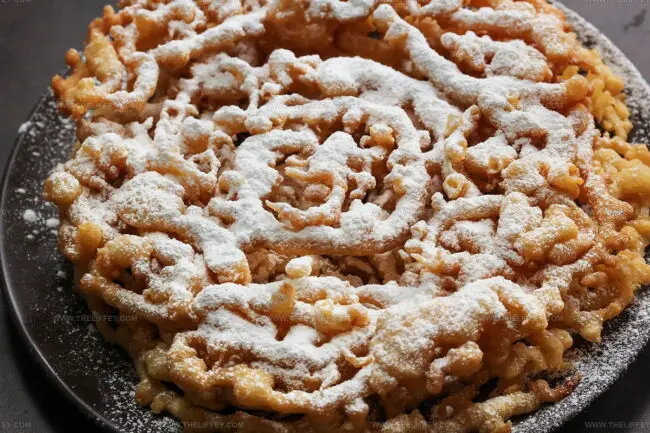
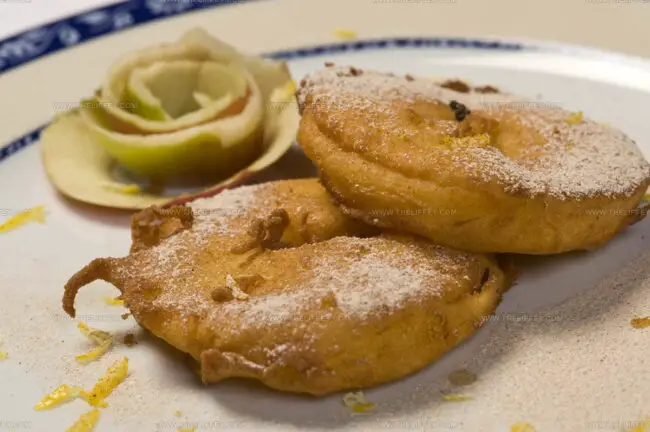
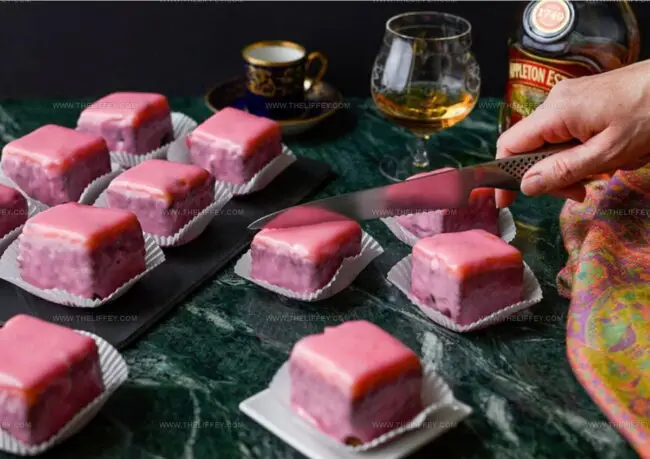
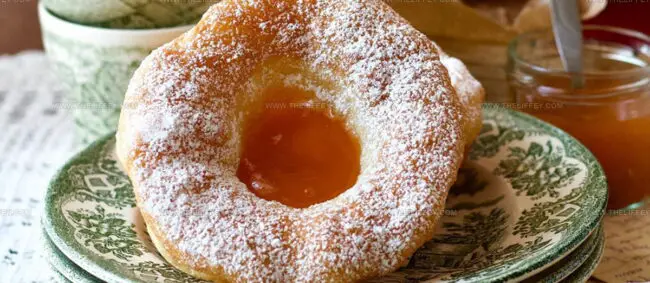
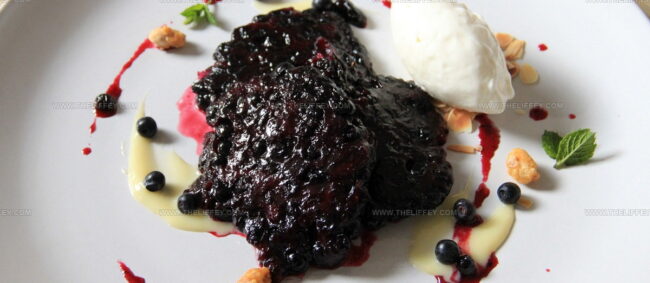
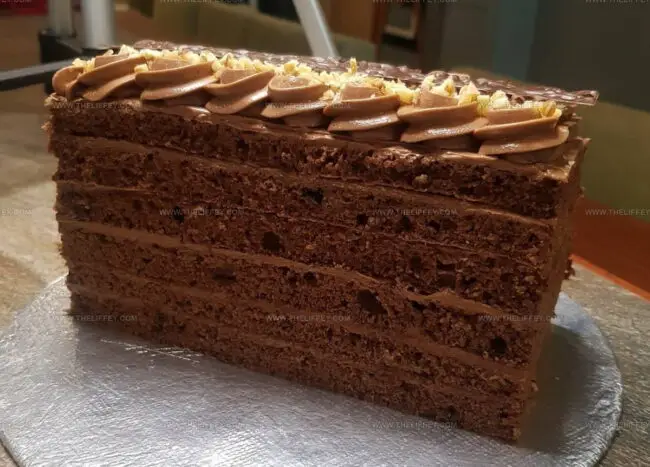
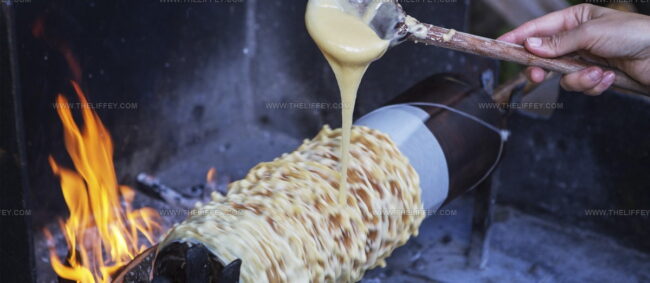
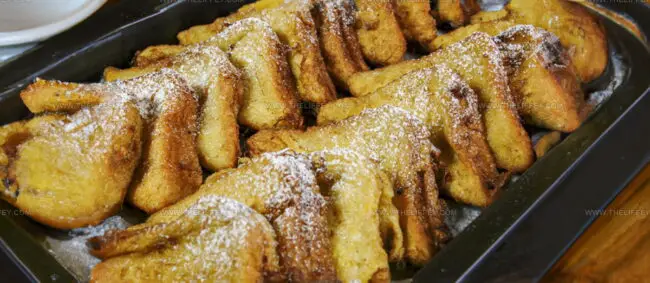
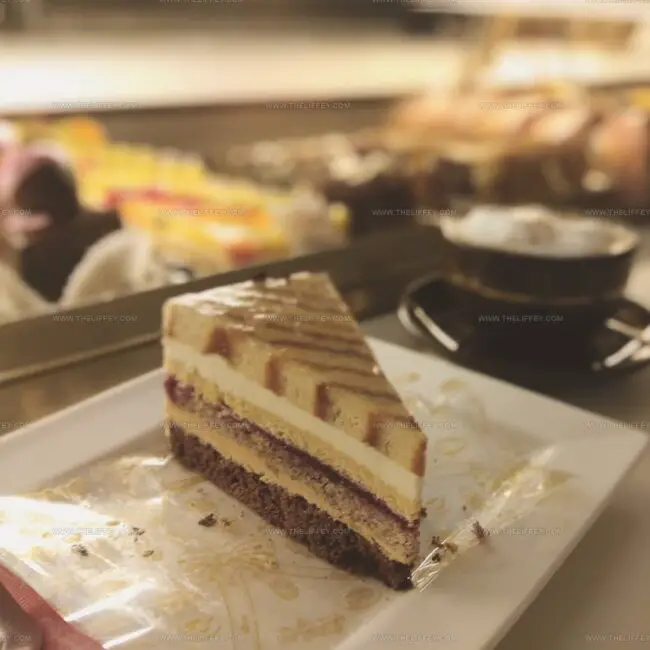
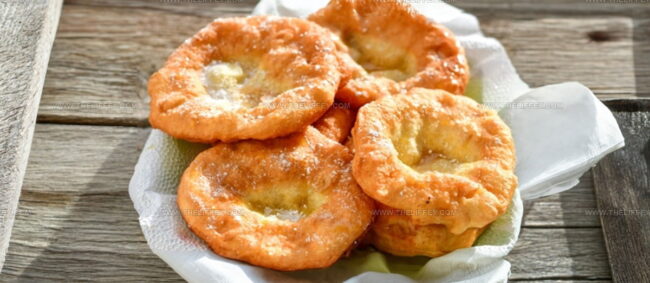

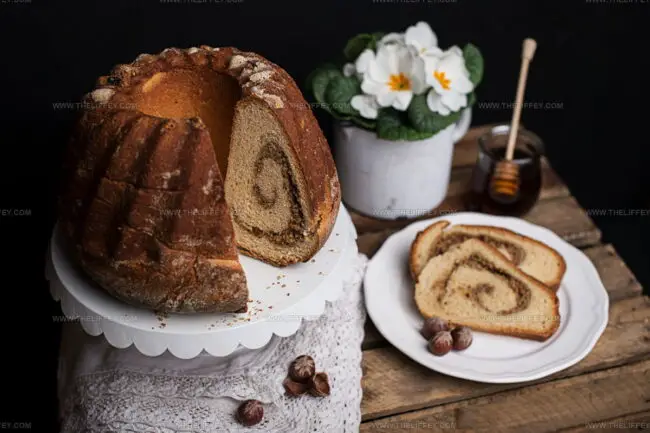
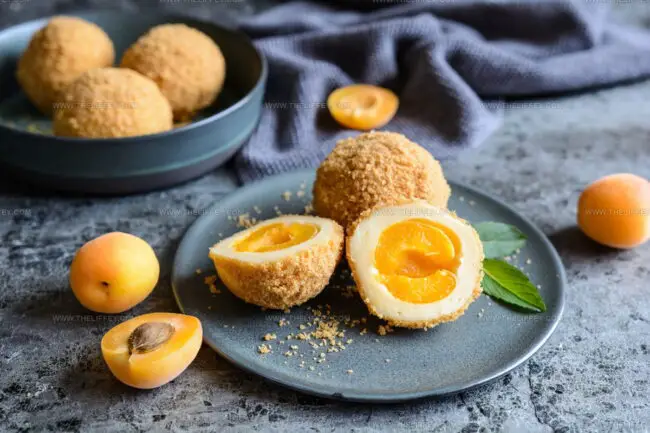
Amanda Bennett
Recipe Curator & Culinary Educator
Expertise
Baking and Pastry Arts, Recipe Testing and Development, Culinary Instruction, Food Styling and Photography
Education
Asheville-Buncombe Technical Community College, Asheville, NC
Diploma in Culinary Arts
Emphasized practical cooking skills, nutrition, and kitchen management.
Cambridge School of Culinary Arts, Cambridge, MA
Certificate in Professional Pastry Arts
Specialized in baking techniques, dessert presentation, and flavor profiling
Amanda’s roots run deep in the Southern hills, where every meal started fresh from the garden and every dessert came with a story. She trained at Asheville-Buncombe Technical Community College and sharpened her pastry skills at the Cambridge School of Culinary Arts, blending classic technique with everyday charm.
At The Liffey, Amanda’s passion is making baking and home cooking feel natural and joyful. She’s all about single recipes that are simple enough for a busy afternoon, but special enough to make someone’s day a little sweeter.